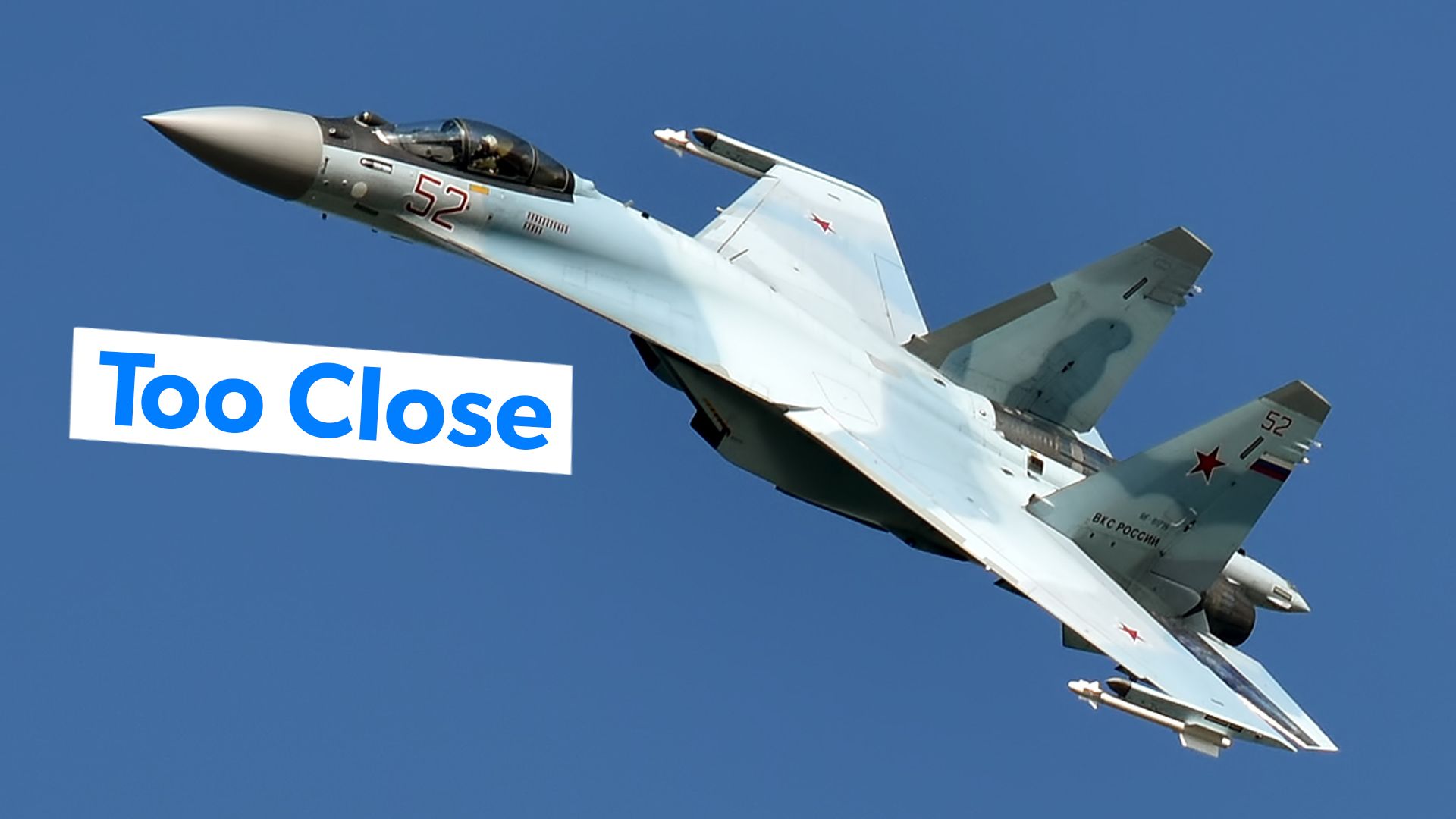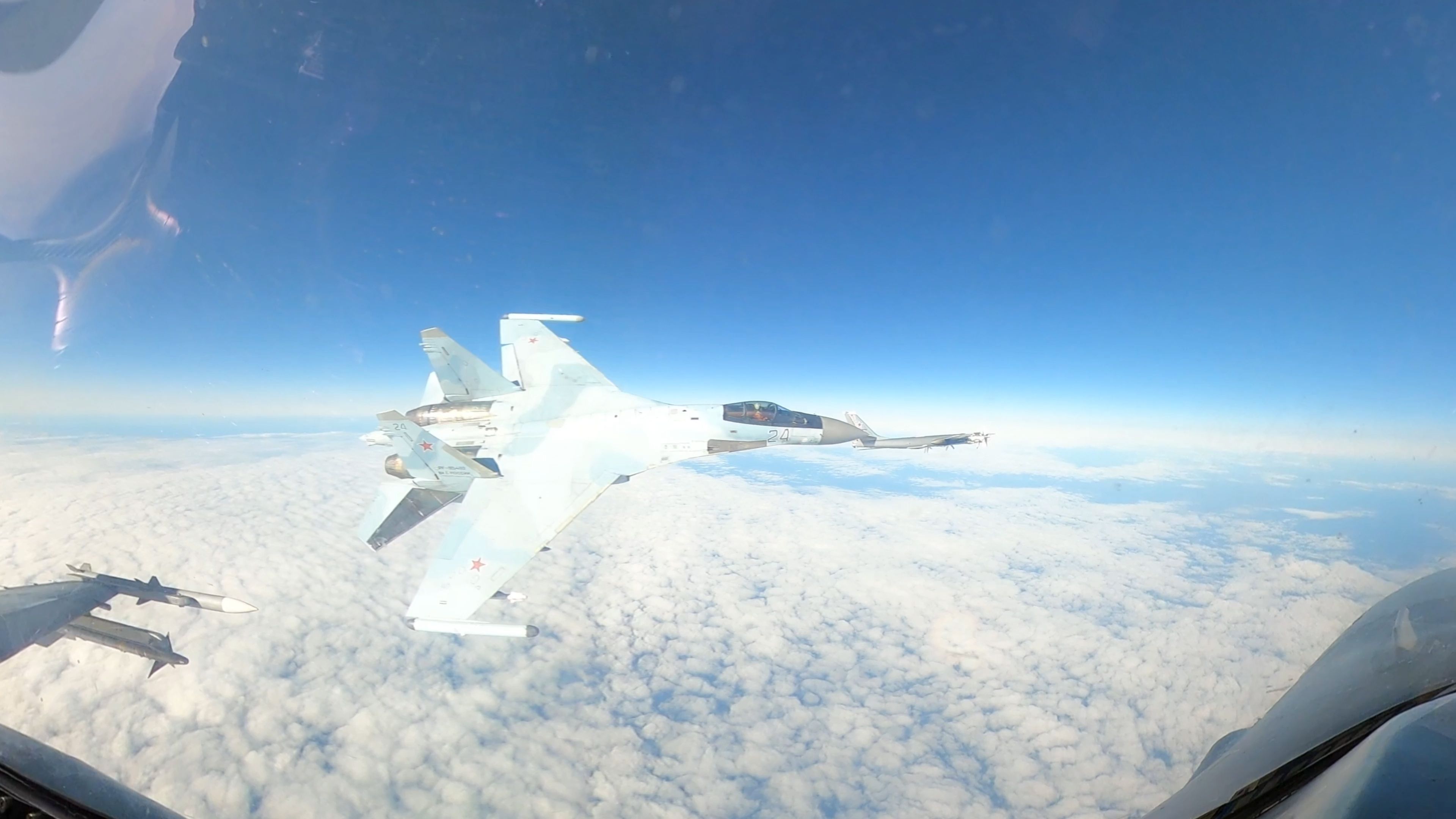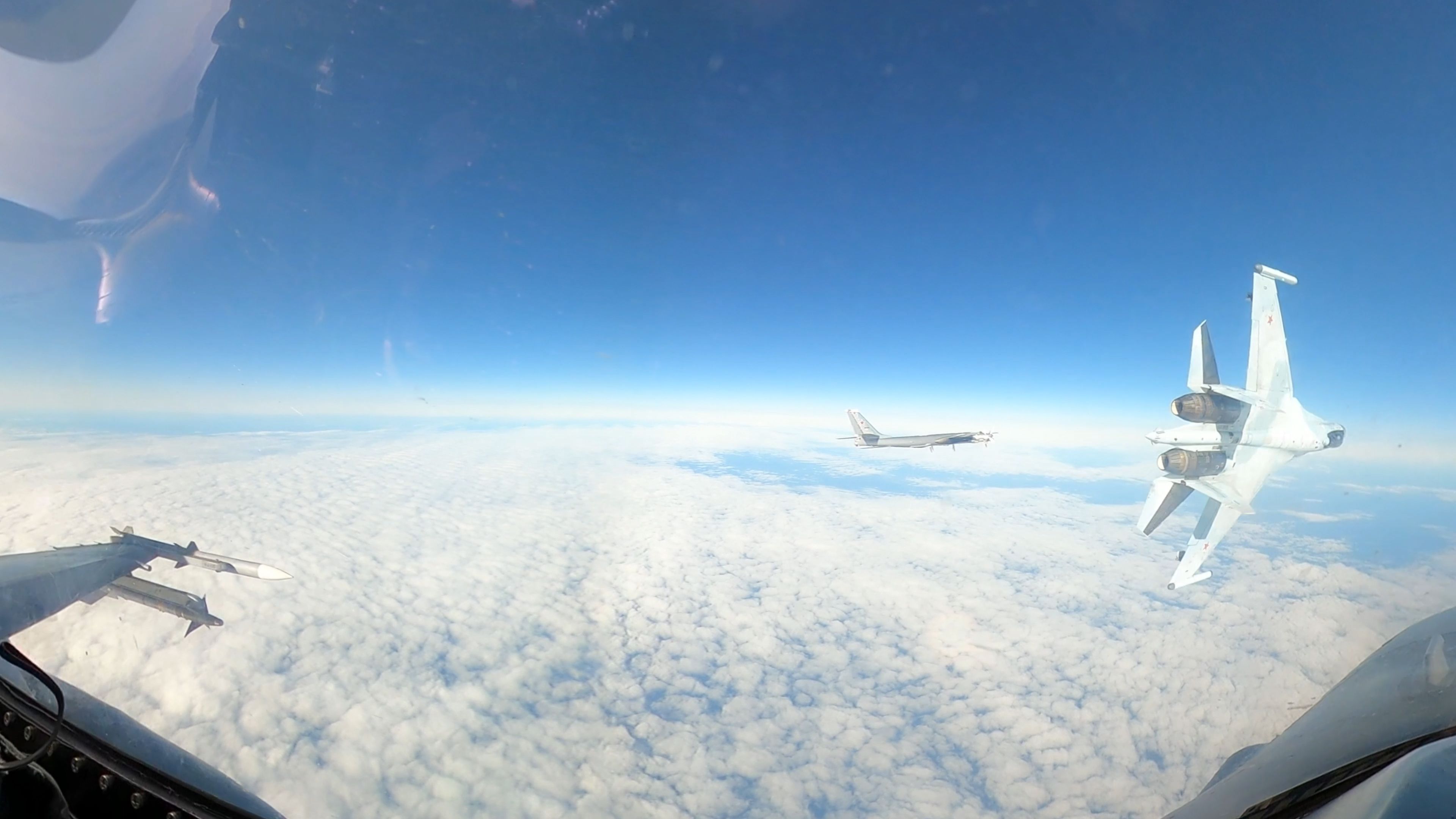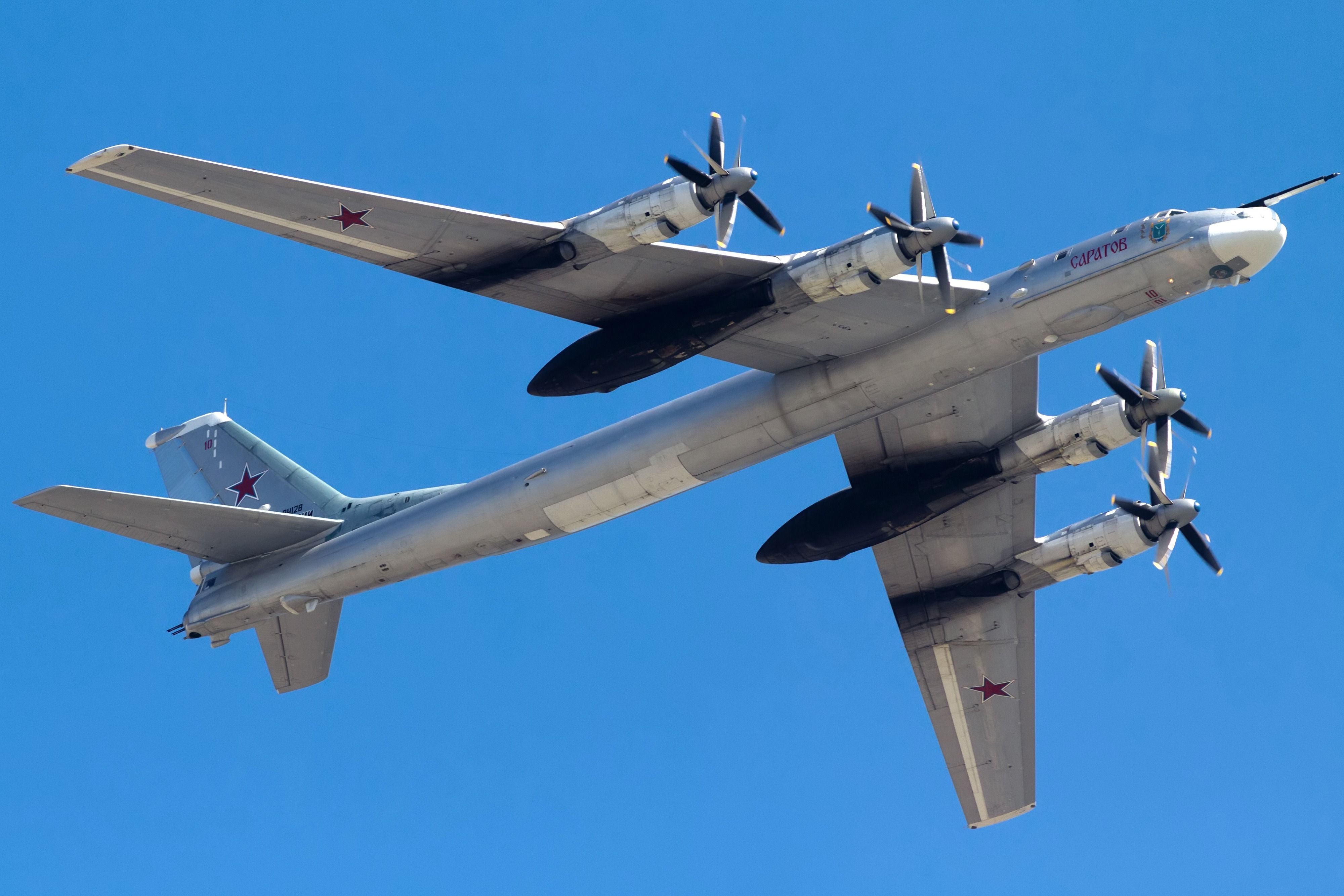North American Aerospace Defense Command (NORAD) has posted a video of an intercept of a pair of Russian Tu-95MS Bear-Hs and their Su-35 escorts as they flew off the coast of Alaska. The video shows a Russian Su-35 Flanker-E
flying a very close “headbutting” maneuver, forcing the United States Air Force
F-16C to avoid the Russian aircraft’s jetwash. While
NORAD intercepts in the area are common
, the video is remarkable for just how much of a close encounter it was. But how common are these sorts of intercepts?
Russian (& Chinese) intercepts are common
US intercepts of Russian (and now Chinese) bombers over the Alaska Air Defense Identification Zone have become common (as Russian and Chinese aircraft intercept American warplanes flying close to their territories). The aircraft do not actually enter US or Canadian airspace.
Photo: US Air Force
It should be noted that the Alaska Air Defense Identification Zone is not US air space—it’s just the buffer that the US watches and then scrambles its jets to warn aircraft they are approaching US air space.
These long range bomber
patrols and intercepts are typically professional. They demonstrate a country’s capabilities and allow countries to flex their muscles without confrontation. In July, the Russian and Chinese air forces showed off with a joint Arctic patrol involving two Russian TU-95 and two PRC H-6 military aircraft.
|
NORAD: |
|
|---|---|
|
Members: |
United States, Canada |
|
Founded: |
12 May 1958 |
|
Main administrative regions: |
Alaska, Canada, Continental US |
|
Role: |
Air defense of US and Canadian airspace |
Russian Su-35 ‘headbutts’ US F-16C
In the latest video, a US F-16C from the 18th Fighter Interceptor Squadron is seen intercepting the Russian aircraft. According to The War Zone, 18th Fighter Interceptor Squadron has been performing alert air sovereignty missions to backfill F-22 Raptors based out of Elmendorf Air Force Base in Anchorage.
What made this latest incident unsettling was how dangerous it was. No one (least of all the Russians) wants a Russian jet to down an American jet.
According to CBS News, “The frequency of Russian airplanes entering the zone varies yearly. NORAD has said the average was six or seven a year, but it has increased recently. There were 26 instances last year and 25 so far this year.“
|
Frequently of NORAD intercepts: |
|
|---|---|
|
pre-2023: |
average 6-7 |
|
2023: |
26 |
|
2024 (year to date – end September): |
25 |
The United States, Russia, and China are the only countries maintaining strategic bomber fleets.
Russia has lost a few strategic bombers in the war in Ukraine
, but its fleets are still mostly intact (although how many are operational is an open question).
Patrols are typically performed with strategic bombers. While Russia has restarted production of its older Tu-160 (producing 1-2 per year – including refurbished airframes), the
Chinese are developing the first non-US strategic stealth bomber – the H-20 Xi’an
(thought to be somewhat analogous to the B-2 Spirit). The US B-21 Raider (billed as the world’s first sixth-generation military aircraft) is now in low-rate production.
More Russian and Chinese intercepts in Europe and Pacific
While Russian aircraft may not actually enter US air space, they recently entered Finland’s air space (Finland is now a NATO member). Additionally, earlier in September, Japan reported it used fares to warn a Russian reconnaissance aircraft to leave northern Japanese airspace.
Photo: US Air Force
China is also known for similar stunts. In 2022, a J-16 Flanker jet dumped radar-reflecting chaff into the path of an Australian P-8A Poseidon maritime patrol aircraft, damaging the aircraft. In May 2024, a Chinese J-10C dumped flames in front of an Australian Navy MH-60R Seahawk helicopter over the Yellow Sea.
A large but unprofessional and lackluster air force
The Russian Air Force
, while large, is known not to be a very professional air force. Its pilots receive much less training than their American counterparts, while standard procedures are not nearly as well drilled in the pilots. In 2022, the lack of Russian professionalism nearly came to blows with NATO as a
rogue Russian pilot fired (against orders/misunderstanding orders) at a British AWACS aircraft
operating in international waters over the Black Sea (one missile malfunctioned and the other missed for some reason).
Russian strategic bombers:
- Tupolev Tu-22M
- Tupolev Tu-95
- Tupolev Tu-160
Photo: BorisVetshev | Shutterstock
Soon after that incident, a Russian fighter jet
collided with an American Reaper drone over the Black Sea as it attempted to dump fuel on the drone (the pilot did not intend the collision). So it should come as little surprise that the US Air Force called the latest Russian encounter near Alaska “unsafe and unprofessional.”
These unprofessional incidents are not just because of increased tensions over the War in Ukraine. In 2020, The War Zone reported a similar close call between a Russian Su-27 and a US B-52 bomber. At the time, The War Zone stated of that encounter at the time, “possibly the most troubling video we have seen of a so-called ‘unsafe intercept’ between one of its aircraft and Russian fighters.”
After 2.5 years of war in Ukraine, the Russian Air Force has failed to destroy the much weaker Ukrainian Air Force and
may now be down 25% of its prewar strength (largely due to increased wear and tear)
.




